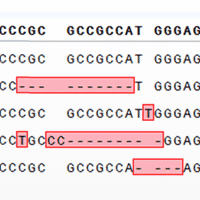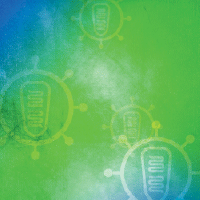10-minute, quantitative lentiviral titer test—Lenti-X GoStix Plus

Lenti-X GoStix Plus provide a rapid, simple, and effective method for instantly quantifying lentivirus in packaging cell supernatants. The test involves applying 20 µl of supernatant to a GoStix cassette and waiting 10 minutes for the appearance of bands that indicate the presence of lentiviral p24. Whereas our original GoStix provided a qualitative output, results from Lenti-X GoStix Plus can be analyzed with a free smartphone app, which quantifies lentivirus titer by comparing the band intensities.
Lenti-X GoStix Plus provide a rapid, simple, and effective method for instantly quantifying lentivirus in packaging cell supernatants. The test involves applying 20 µl of supernatant to a GoStix cassette and waiting 10 minutes for the appearance of bands that indicate the presence of lentiviral p24. Whereas our original GoStix provided a qualitative output, results from Lenti-X GoStix Plus can be analyzed with a free smartphone app, which quantifies lentivirus titer by comparing the band intensities.
The quantitative output from the Lenti-X GoStix App (referred to as a GoStix Value, or GV) can be used to compare virus amounts between different preparations in a manner similar to, but far easier and quicker than, an ELISA, and allows for calculation of actual IFU/ml using a reference virus. Visit our FAQs page for information on how to download and use the smartphone app.
By enabling quick and easy lentivirus quantitation, Lenti-X GoStix Plus allow you to minimize variability in your transduction protocol and achieve consistent performance for each experiment.
Overview
- Quantify lentivirus titer in 10 minutes using a simple smartphone app*
- Determine the optimal time to harvest lentiviral supernatants
- Achieve consistent transduction performance for your experiments
*The original Lenti-X GoStix (Cat # 631243 and 631244) cannot be used for lentivirus quantitation with the smartphone app and are being phased out. These items will no longer be available once inventories are depleted. If desired, Lenti-X GoStix Plus can be used for qualitative analyses in the same manner as the original Lenti-X GoStix.
More Information
Applications
- Confirm successful lentiviral packaging reactions
- Compare virus amounts between different preparations
Additional product information
Please see the product's Certificate of Analysis for information about storage conditions, product components, and technical specifications. Please see the Kit Components List to determine kit components. Certificates of Analysis and Kit Components Lists are located under the Documents tab.

Lenti-X GoStix Plus
Lenti-X GoStix Plus are an amazingly simple solution for quantifying the amount of virus produced by your packaging cells. Apply 20 µl of your lentiviral supernatant and four drops of buffer to a GoStix cassette, wait for the indicator bands to appear, and then scan the bands using a smartphone app. Takes just 10 minutes!
Video protocols FAQsTakara Bio USA, Inc.
United States/Canada: +1.800.662.2566 • Asia Pacific: +1.650.919.7300 • Europe: +33.(0)1.3904.6880 • Japan: +81.(0)77.565.6999
FOR RESEARCH USE ONLY. NOT FOR USE IN DIAGNOSTIC PROCEDURES. © 2025 Takara Bio Inc. All Rights Reserved. All trademarks are the property of Takara Bio Inc. or its affiliate(s) in the U.S. and/or other countries or their respective owners. Certain trademarks may not be registered in all jurisdictions. Additional product, intellectual property, and restricted use information is available at takarabio.com.





